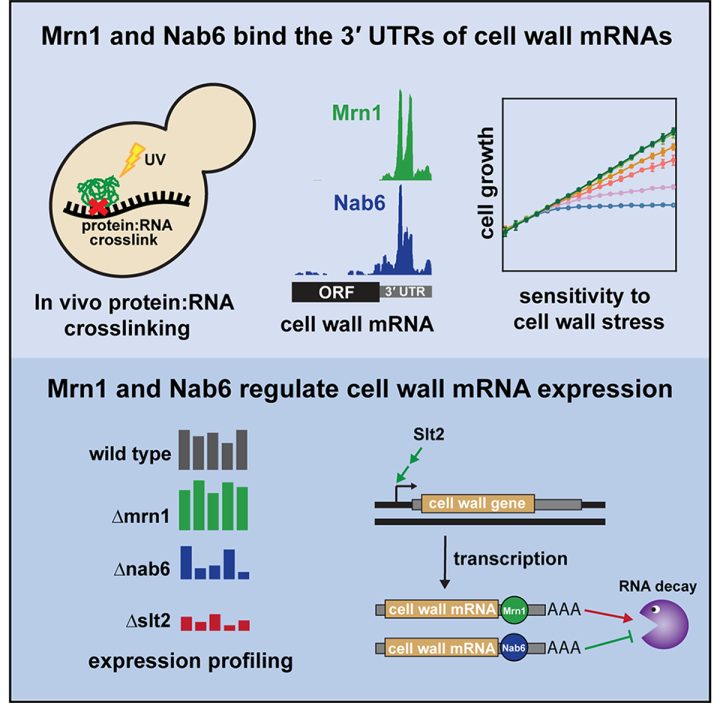A posttranscriptional pathway regulates cell wall mRNA expression in budding yeast
Tollervey Lab paper featured in Cell Reports.
Authors
Bresson, S., Shchepachev, V. and Tollervey, D.

Summary of Paper by Lori Koch
Antifungal resistance can pose a problem for human health but it remains poorly understood how fungal species such as yeast actually gain resistance. In a previous study, scientists in the Tollervey lab used their total RNA-associated proteome purification (TRAPP) method to identify budding yeast proteins that become specifically associated with RNA during different stress conditions. In their latest study, now published in Cell Reports, scientists led by Dr. Stefan Bresson have characterized how the proteins Nab6 and Mrn1 regulate specific RNAs in the stress response. They performed crosslinking and amplification of cDNA (CRAC) and found that Nab6 and Mrn1 associate with the 3’UTR ends of an overlapping group of cell wall-associated mRNAs. A thorough genetic analysis indicated that Nab6 acts separately and in parallel with the well-known cell wall integrity (CWI) pathway to promote the yeast’s ability to withstand cell wall stress. Next they performed RNA-sequencing and found that Nab6 is required for full expression of its target mRNAs. Growth assays and sequencing data both suggest that Mrn1 has the opposite effect of Nab6 and instead disrupts the ability of cells to withstand stress. Finally, experiments using transcription inhibitors and reporter constructs showed that Nab6 mainly influences mRNA stability after transcription (post-transcriptionally). Together, the work uncovers mechanisms the yeast cell uses to resist stress, which may be important for preventing antifungal resistance.

